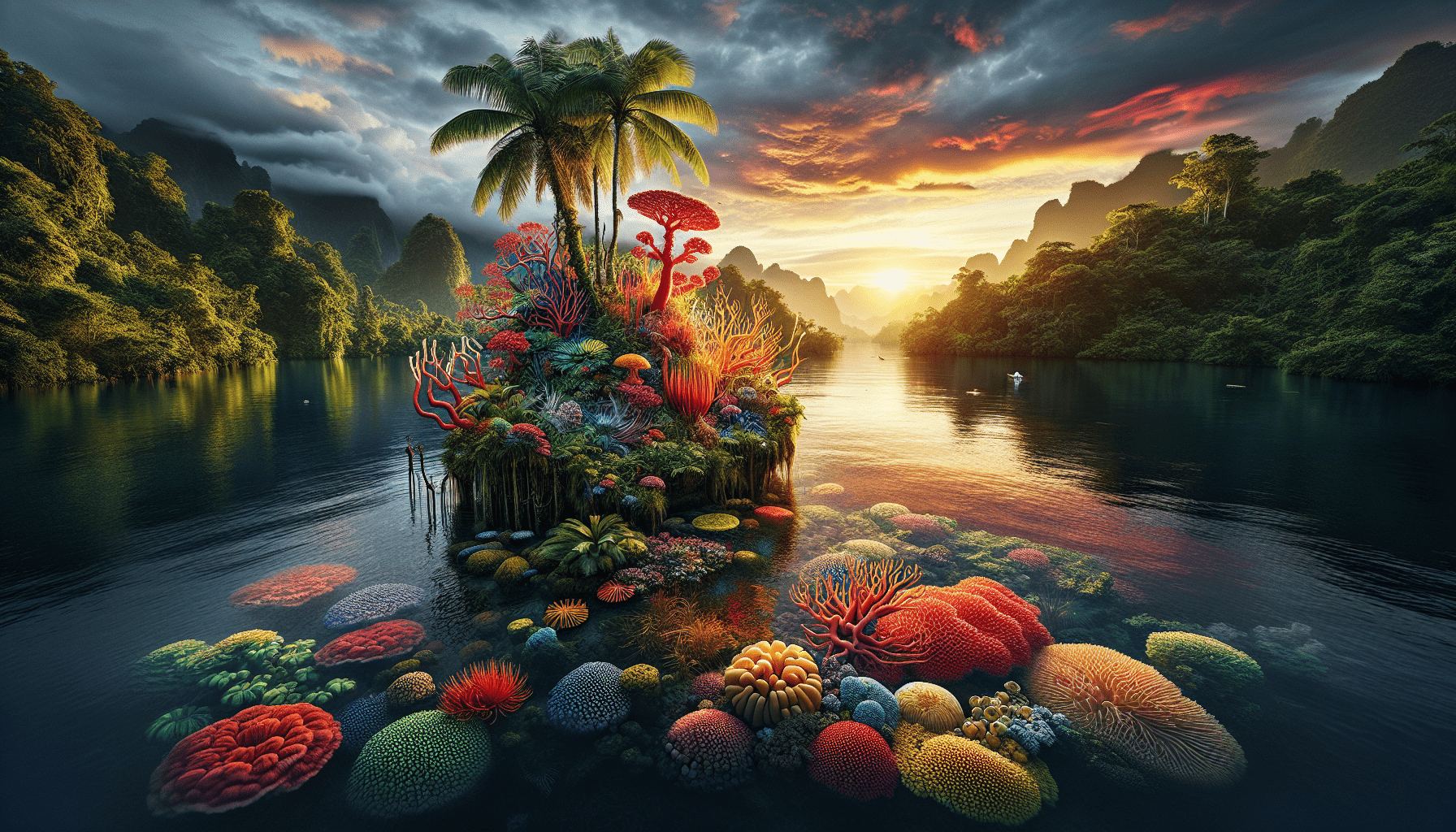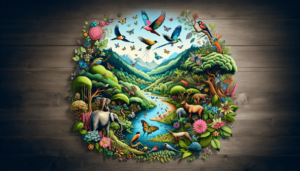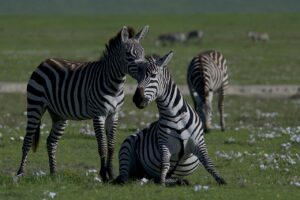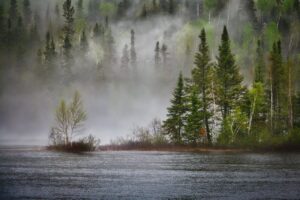In this article, we explore the fascinating world of biodiversity hotspots and highlight some remarkable examples. Biodiversity hotspots are areas of the world that boast an incredibly high concentration of unique species, making them vital for the preservation of Earth’s rich biodiversity. From the lush rainforests of the Amazon to the vibrant coral reefs of the Coral Triangle, we take you on a journey to some of the most extraordinary and biodiverse regions on our planet. Get ready to be amazed by the remarkable diversity our world has to offer!
Amazon Rainforest
Location and Size
The Amazon Rainforest is located in South America, spanning across several countries including Brazil, Peru, Colombia, Venezuela, and Ecuador. It is the largest tropical rainforest in the world, covering approximately 5.5 million square kilometers. This vast expanse of lush greenery is truly awe-inspiring and serves as a crucial ecosystem for our planet.
Biodiversity
The Amazon Rainforest is renowned for its unparalleled biodiversity. It is home to more than 40,000 plant species, including iconic ones such as the giant water lilies and the rubber tree. The forest is also a haven for animal species, with over 400 species of mammals, 1,300 species of birds, and 3,000 species of fish dwelling within its boundaries. From the mighty jaguars to the colorful macaws, the Amazon Rainforest shelters an astonishing array of creatures.
Threats
Unfortunately, the Amazon Rainforest is under constant threat from various factors. Deforestation poses a significant danger as large portions of the forest are cleared for logging, agriculture, and mining activities. Illegal hunting and poaching also disrupt the delicate balance of the ecosystem by targeting endangered species. Additionally, climate change and the resulting increase in wildfires pose a grave concern for the Amazon Rainforest, exacerbating its vulnerability.
Conservation Efforts
Efforts to conserve the Amazon Rainforest are being carried out by governments, NGOs, and local communities alike. Initiatives aim to combat deforestation through stricter regulations and promoting sustainable land use practices. Reforestation projects are also underway, focusing on planting trees to regenerate the lost forest cover. Moreover, conservation organizations are working towards combatting illegal hunting and wildlife trafficking, while promoting education and awareness about the importance of preserving this remarkable ecosystem.
Coral Triangle
Location and Size
The Coral Triangle is situated in the western Pacific Ocean, encompassing the waters of Indonesia, Malaysia, Papua New Guinea, the Philippines, the Solomon Islands, and Timor-Leste. It is often referred to as the “Amazon of the Seas” due to its incredible marine biodiversity. The area spans approximately 6 million square kilometers, making it the largest coral reef ecosystem in the world.
Biodiversity
The Coral Triangle boasts an astounding assortment of marine life. It is home to more than 600 coral species, which accounts for 75% of all known coral species in the world. This underwater wonderland also supports over 3,000 species of fish, including vibrant reef fish, majestic sharks, and graceful sea turtles. Countless unique and endangered species can be found within the Coral Triangle, making it a biodiversity hotspot of global significance.
Threats
Despite its ecological importance, the Coral Triangle faces numerous threats. Unsustainable fishing practices, such as overfishing and destructive fishing methods, put immense pressure on the delicate ecosystem. Pollution from coastal development, land-based activities, and climate change further degrade the coral reefs. Rising sea temperatures and ocean acidification pose additional risks, leading to coral bleaching and the deterioration of marine habitats.
Conservation Efforts
To safeguard the Coral Triangle, conservation efforts are being implemented at various levels. Collaborative initiatives are promoting sustainable fishing practices and the protection of vulnerable species. Marine protected areas and no-take zones are being established to allow damaged reefs to recover and maintain biodiversity. Awareness campaigns targeting local communities and tourists aim to reduce destructive practices and promote responsible tourism. International cooperation and funding are crucial in supporting the long-term conservation of this invaluable marine ecosystem.
Madagascar
Location and Size
Madagascar is an island nation located off the southeastern coast of Africa in the Indian Ocean. It is the fourth-largest island in the world, covering approximately 587,041 square kilometers. This unique landmass has been isolated for millions of years, leading to the evolution of distinct and endemic plant and animal species.
Biodiversity
Madagascar is often referred to as the “Eighth Continent” due to its exceptional biodiversity. More than 90% of the island’s wildlife is found nowhere else on Earth. The country is renowned for its lemurs, with over 100 different species inhabiting the island. Other iconic animals include the fossa, a carnivorous mammal, and the vibrant chameleons. With its diverse range of ecosystems, from rainforests to spiny forests, Madagascar is a hotbed of rare and endemic species.
Threats
However, Madagascar’s biodiversity faces severe threats. Deforestation is one of the most significant challenges, driven by the expansion of agriculture, logging, and charcoal production. This habitat loss not only disrupts the natural balance but also threatens the survival of unique plant and animal species. Illegal hunting and the illegal pet trade also contribute to the decline of Madagascar’s wildlife, as certain species are targeted for their rarity or cultural significance.
Conservation Efforts
Numerous organizations, both local and international, are working tirelessly to protect the biodiversity of Madagascar. Reforestation projects aim to restore degraded forests and create corridors for animal movement. Conservation areas and national parks have been established to preserve key habitats and biodiversity hotspots. Education and community engagement programs are vital in promoting sustainable practices and raising awareness about the importance of protecting Madagascar’s unique natural heritage.
Atlantic Forest
Location and Size
The Atlantic Forest, also known as Mata Atlântica, is a lush forest ecosystem that stretches along the Atlantic coast of Brazil, Uruguay, and Argentina. It is one of the most endangered and fragmented tropical forests in the world. At its peak, the Atlantic Forest covered around 1.5 million square kilometers, but today, only about 7% of the original forest remains.
Biodiversity
Despite its fragmented state, the Atlantic Forest still supports a remarkable diversity of species. It is estimated to be home to around 20,000 species of plants, many of which are endemic and found nowhere else on Earth. The forest also harbors an array of unique animal species, including the golden lion tamarin, the maned sloth, and the red-billed curassow. Its extraordinary biodiversity places the Atlantic Forest among the world’s biodiversity hotspots.
Threats
The Atlantic Forest faces a multitude of threats, primarily due to human activities. Urbanization, agriculture, and logging have significantly reduced the forest’s size and connectivity. Fragmentation disrupts wildlife habitats and restricts their movement, making them more vulnerable to extinction. Climate change, invasive species, and wildfires further exacerbate the challenges faced by this extraordinary ecosystem.
Conservation Efforts
Efforts to protect the remaining fragments of the Atlantic Forest are being carried out by governmental and non-governmental organizations. Conservation initiatives focus on reforestation, promoting sustainable land use practices, and restoring corridors to connect isolated patches. Strict regulations and protected areas aim to safeguard key habitats and endangered species. Environmental education and community engagement programs play a vital role in fostering a sense of stewardship and raising awareness about the importance of preserving the Atlantic Forest.
Cape Floristic Region
Location and Size
The Cape Floristic Region is situated in the southwestern tip of South Africa. This unique hotspot covers an area of approximately 90,000 square kilometers, encompassing the Cape Peninsula, the Cape Fold Belt, and the regions surrounding the Cape of Good Hope. It is characterized by a diverse range of habitats, including fynbos, forests, wetlands, and sand dunes.
Biodiversity
The Cape Floristic Region is renowned for its floral richness and endemism. It is home to over 9,000 plant species, of which around 70% are found nowhere else on Earth. Fynbos, a distinctive type of shrubland, dominates the landscape and is a key contributor to the region’s high biodiversity. In addition to its spectacular plant diversity, the Cape Floristic Region supports a variety of animal species, including the endangered Cape Mountain Zebra and the charismatic African Penguin.
Threats
Despite its ecological significance, the Cape Floristic Region faces several threats. Urbanization, agricultural expansion, and invasive alien species pose significant challenges to the native flora and fauna. Land transformation and habitat loss disrupt the delicate balance of this unique ecosystem, increasing the risk of species extinction. Climate change and changing fire regimes also impact the Cape Floristic Region, altering the natural cycles and threatening the survival of its iconic plant species.
Conservation Efforts
Conservation efforts in the Cape Floristic Region aim to protect and restore the diverse habitats within the region. The establishment of nature reserves and protected areas helps safeguard key areas of biodiversity. Invasive species management programs work towards controlling and eradicating non-native plants and animals that threaten the native species. Collaboration between government agencies, conservation organizations, and local communities is crucial in implementing sustainable land management practices and raising awareness about the importance of preserving this extraordinary biodiversity hotspot.
Sundaland
Location and Size
Sundaland refers to a biogeographical region that encompasses the islands of Borneo, Sumatra, and Java, along with the Malay Peninsula and their surrounding smaller islands. These islands are located in Southeast Asia and are renowned for their breathtaking natural beauty. The combined land area of Sundaland is approximately 1.9 million square kilometers.
Biodiversity
Sundaland is a biodiversity hotspot, boasting an astonishing range of species. It is estimated to be home to over 30,000 plant species, including unique and endemic ones. The region is also a sanctuary for a vast array of animals, such as the critically endangered Sumatran orangutan, the elusive Bornean pygmy elephant, and the iconic Javan rhinoceros. Sundaland’s diverse ecosystems, including rainforests, mangroves, and peatlands, provide a haven for biodiversity.
Threats
However, the remarkable biodiversity of Sundaland is under significant threat. Deforestation, primarily driven by palm oil plantations and logging, is the most pressing issue facing the region. This widespread destruction of habitat disrupts the ecosystems and threatens the survival of countless species. Unsustainable hunting and the illegal pet trade also contribute to the decline of numerous animal species.
Conservation Efforts
Conservation efforts in Sundaland aim to mitigate the impact of deforestation and protect the unique biodiversity of the region. Initiatives focus on promoting sustainable practices and reducing the demand for unsustainable products, such as palm oil. Reforestation projects and the establishment of protected areas aim to restore forest cover and safeguard critical habitats. Collaborative efforts between governments, conservation organizations, and local communities are crucial in combating the ongoing threats and ensuring the long-term conservation of Sundaland’s invaluable biodiversity.
California Floristic Province
Location and Size
The California Floristic Province is located along the western coast of the United States, stretching from southern Oregon to Baja California in Mexico. This biodiversity hotspot covers an area of approximately 380,000 square kilometers, encompassing diverse ecosystems such as coastal dunes, chaparral, grasslands, and montane forests.
Biodiversity
The California Floristic Province is renowned for its floral diversity, boasting over 7,000 plant species. Approximately two-thirds of these species are endemic to the region, meaning they are found nowhere else on Earth. From majestic coast redwoods to vibrant wildflowers, the province showcases a captivating array of plant life. Wildlife thrives within this ecosystem as well, with species such as the California condor, the desert tortoise, and the mountain lion calling this region home.
Threats
The California Floristic Province faces various threats that endanger its unique biodiversity. Urbanization and agricultural expansion pose significant challenges, resulting in habitat loss and fragmentation. Invasive plant species are also a concern, as they outcompete and displace native flora. Climate change further exacerbates these threats, altering precipitation patterns and increasing the risk of wildfires, which can have devastating effects on the region’s ecosystems.
Conservation Efforts
Numerous conservation efforts are underway to protect the diverse habitats within the California Floristic Province. The establishment of national and state parks, along with private land conservation initiatives, aims to preserve critical areas and maintain viable populations of endangered species. Restoration projects focus on removing invasive species and restoring native plant communities. Conservation organizations also play a vital role in raising awareness and promoting sustainable land management practices among local communities and stakeholders.
Hengduan Mountains
Location and Size
The Hengduan Mountains are situated in southwestern China, encompassing portions of the provinces of Sichuan, Yunnan, and Tibet. This mountain range stretches over approximately 400,000 square kilometers and is known for its breathtaking landscapes and unique biodiversity.
Biodiversity
The Hengduan Mountains are a hotspot of biodiversity, hosting an impressive array of plant and animal species. The region is rich in endemic plant species, with over 6,000 recorded, including the iconic Tibetan rhubarb and various species of primroses. The mountains are also home to many elusive and endangered animal species, such as the giant panda, the red panda, and the snow leopard. With its diverse range of ecosystems, from alpine meadows to ancient forests, the Hengduan Mountains are a haven for biodiversity.
Threats
However, the delicate balance of the Hengduan Mountains is under threat from various factors. Deforestation, driven by timber extraction and agricultural practices, poses a significant risk to the region’s ecosystems. Climate change and melting glaciers also impact the unique alpine habitats, altering water availability and affecting species that rely on these resources. Poaching and illegal wildlife trade further endanger the already vulnerable animal species in the area.
Conservation Efforts
Conservation efforts in the Hengduan Mountains focus on protecting the unique plant and animal species within the region. Establishing nature reserves and protected areas help safeguard critical habitats and restrict destructive activities. Reforestation projects aim to restore and protect the forest cover, mitigating the impact of deforestation. Conservation organizations work closely with local communities to promote sustainable practices and raise awareness about the importance of preserving this extraordinary mountain ecosystem.
Mesoamerican Barrier Reef System
Location and Size
The Mesoamerican Barrier Reef System is the largest coral reef system in the Western Hemisphere. It spans over 1,000 kilometers along the coasts of Mexico, Belize, Guatemala, and Honduras. This remarkable underwater ecosystem extends for approximately 65,000 square kilometers, encompassing diverse habitats such as coral reefs, seagrass beds, and mangrove forests.
Biodiversity
The Mesoamerican Barrier Reef System is teeming with marine life, making it one of the most biologically diverse regions in the world. It is home to nearly 500 species of coral and more than 500 species of fish, including the charismatic queen angelfish and the endangered Nassau grouper. The reef also provides essential feeding and breeding grounds for a variety of marine species, including sea turtles and sharks.
Threats
Despite its ecological significance, the Mesoamerican Barrier Reef System faces significant threats. Coral bleaching, caused by rising water temperatures and pollution, is a major concern, leading to the degradation of coral reefs. Overfishing and destructive fishing practices, such as the use of dynamite and cyanide, deplete fish populations and disrupt the delicate balance of the ecosystem. Coastal development, pollution, and runoff from agriculture further impact the health of the reef system.
Conservation Efforts
International cooperation and local initiatives are crucial in protecting the Mesoamerican Barrier Reef System. Conservation organizations work alongside governments and local communities to establish marine protected areas and implement sustainable fishing practices. Restoration projects focus on coral reef rehabilitation and monitoring efforts to assess the health of the reef system. Awareness campaigns and educational programs play a vital role in promoting responsible tourism and raising awareness about the importance of preserving this invaluable marine ecosystem.
Mountains of Central Asia
Location and Size
The Mountains of Central Asia, also known as the “Roof of the World,” span across several countries including Afghanistan, China, India, Kyrgyzstan, Pakistan, Tajikistan, and Uzbekistan. This vast mountain range stretches for approximately 3,500 kilometers, covering an area of over 1.5 million square kilometers. The high peaks and rugged terrain of the Central Asian mountains contribute to their unique ecological characteristics.
Biodiversity
The Mountains of Central Asia are a hotbed of biodiversity, harboring a rich array of plant and animal species. This region boasts over 6,000 plant species, including many rare and medicinal plants. The mountains also support a variety of iconic animal species, such as the snow leopard, the Siberian ibex, and the Marco Polo sheep. These mountains are home to numerous endemic species that have adapted to the extreme high-altitude conditions.
Threats
The fragile ecosystems of the Mountains of Central Asia face numerous threats, primarily driven by human activities. Unsustainable logging and mining practices lead to habitat destruction and fragmentation. Overgrazing by livestock poses a significant threat to the delicate alpine meadow ecosystems. Climate change exacerbates these challenges, with melting glaciers and changing precipitation patterns affecting water availability and disrupting fragile habitats. Illegal hunting and poaching also endanger iconic animal species within the region.
Conservation Efforts
Conservation efforts in the Mountains of Central Asia aim to protect the unique species and habitats within the region. Establishing protected areas and national parks help safeguard critical habitats and restrict destructive activities. Reforestation projects, combined with sustainable land use practices, contribute to the restoration of degraded habitats and the prevention of further deforestation. Conservation organizations collaborate with local communities to promote sustainable livelihoods and raise awareness about the importance of preserving these majestic mountain ecosystems.
In conclusion, biodiversity hotspots such as the Amazon Rainforest, the Coral Triangle, Madagascar, the Atlantic Forest, the Cape Floristic Region, Sundaland, the California Floristic Province, the Hengduan Mountains, the Mesoamerican Barrier Reef System, and the Mountains of Central Asia are invaluable reservoirs of unique species and habitats. Despite facing numerous threats, conservation efforts, ranging from forest restoration and protected area establishment to sustainable fishing practices and education, show promise in safeguarding these biodiversity hotspots. It is our collective responsibility to support and contribute to these conservation initiatives, ensuring the long-term survival and vitality of these extraordinary ecosystems for future generations.




